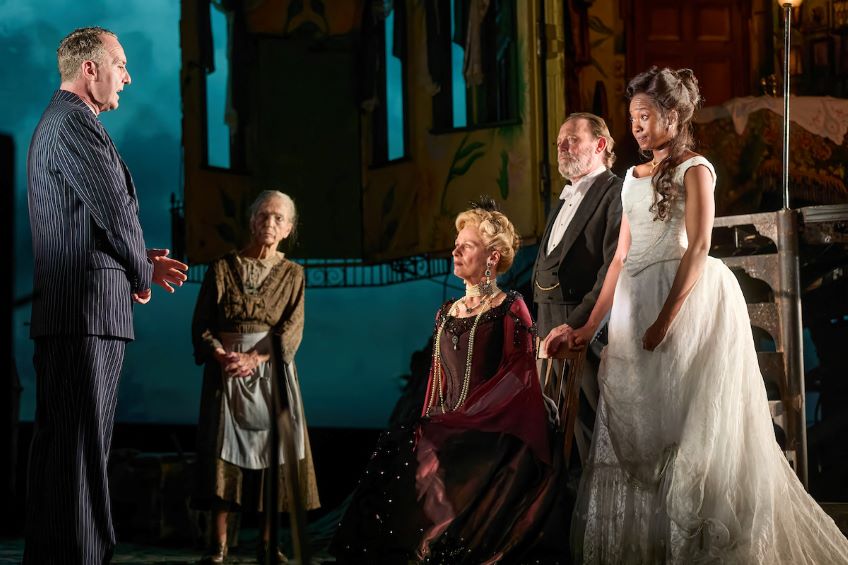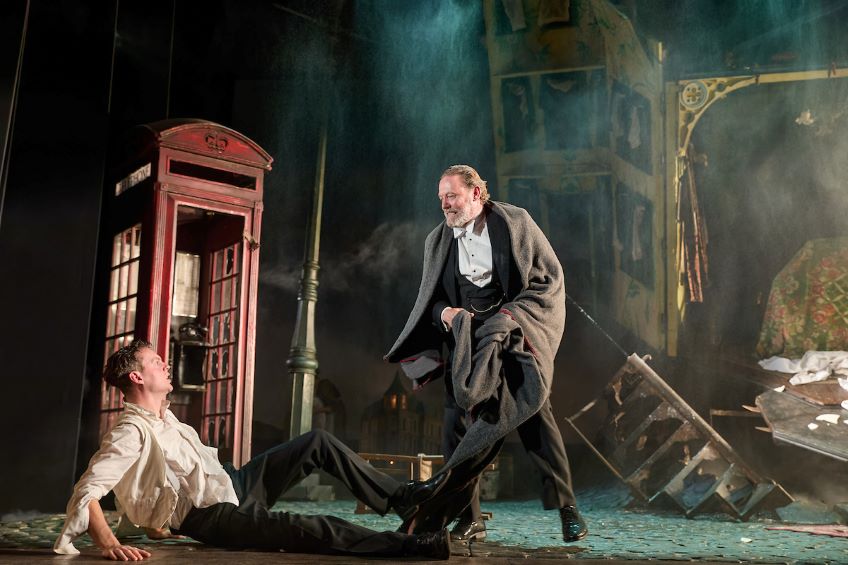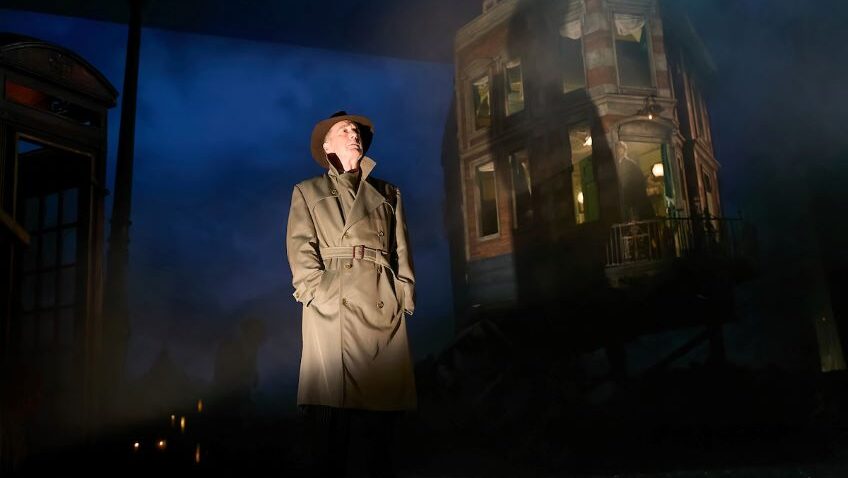J.B. Priestley’s An Inspector Calls is a riveting, powerful drama. Through cleverly calculated build-ups of intrigue, tension and suspense that arise from strings of unexpected revelations and surprises, all culminating in a spooky, knock-out ending, the piece is guaranteed to leave its audience stunned. Written in the 1940s and first performed in Moscow in 1946 at the end of WWII, it was made spine-chilling and unforgettable by Alastair Sim in the film of 1954.
The piece is set, though, in the Edwardian society of 1912, a society in which, as the playwright sees it, a powerful, wealthy, blinkered minority rules the roost and dictates the quality of life – and death – of those in the huge underclass of poor, powerless workers, making rich and poor seem almost to be separate species – a situation that applies, of course, to societies not only then and not only there.
Through the steady input and interweave of mind-boggling, thought-provoking events and revelations, the intrigue slowly, gradually builds, introducing secret love affairs, drunkenness, gambling, unwanted pregnancy, suicide, deception, hypocrisy, injustice, guilty conscience, blame, class prejudice, responsibility and accountability, all leading to that spooky twist in the tail.
Priestley’s original play takes place in real time in the comfortable Edwardian home of the well-off Birling family as they celebrate – in the largely formal, restrained, outwardly polite manner of the day – the engagement of daughter Sheila to the son of Lord and Lady Croft. Out of the blue, a mysterious Inspector turns up to report the death of poor, young girl and, more specifically, to throw spanners into works, left right and centre, with claims and accusations that force the family into numerous, startling confessions, tension subtly mounting with each, one by one.

Subtlety is out, though, in this popular, multi-award-winning production, which runs without interval. It was first directed by Steven Daltry in 1992 and uses a provocatively surreal setting and staging. As the cast crudely hammers home each revelation with an entire toolbox of blunt instruments, Edwardian restraint has flown out of the distorted window to be replaced with stroppy, bolshie, emotionally demonstrative body language and delivery, creating a Birling family that wouldn’t be out of place on a Jeremy Kyle type show. There’s even a fight director on board. Frequent, manic shouting, loud music and uncontrolled hot tempers may be more relatable to modern audiences but it does make a properly icy, more intimate chilling of spines somewhat harder to achieve.
WWII sirens herald the start of the play as wartime urchins run up and down in distress in front of a heavy, red theatre curtain with dishevelled fringe. When one little lad kicks at an old radio, massively loud music blares out and the curtain rises to reveal a ridiculously distorted Birling House. Like at a fairground or in Alice-in-Wonderland its strange doors, windows and balcony are too small for human proportions, and it perches precariously high on stilts, surrounded by bleak, dark wartime debris. The precarious, winding metal steps look like an accident waiting to happen – and on this night they prove to be an accident that does happen! After a terrible fall and collision left two actresses immensely stunned, the play was halted for ten minutes.
The surreal house may represent the distorted reality of the Birlings’ lives and of the society they live in, and when it collapses it does reflect what happens to their lives, but other than providing fascinating theatrical spectacle it seems an unnecessary contriving. The set’s layout also makes realistic physical interactions more strained and difficult as characters parade and rant, upstairs, downstairs, inside and out. While many of their shouty proclamations verge on the melodrama of a Ripping Yarns tale, even the enigmatic, Scottish inspector loses his mysterious air once he launches into tirades of uncontrolled anger and peels off layers of neat clothing whilst also peeling away the layers of Birling guilt.

The arrival of the silent Inspector, though, in raincoat and trilby, evokes nicely an initial, mysterious mood as his silhouette steps from the auditorium to stand outside the house during the first scene. Not so good is that the scene is full of fast-paced, often mumbled dialogue that takes place behind closed doors. Barely glimpsed through a small window, it leaves the audience contemplating the distractions of abundant visual spectacle on stage below. Here the inspector interacts with the WWII urchin and with the family’s largely silent, ever present servant, Edna. Old, bent over, yet loyally attentive at every moment to the family’s every little need, her demeanor is sometimes a bit reminiscent of Dame Edna’s forlorn “bridesmaid” Madge.
The subtler strains from cello, piano and violin, the pouring rain and the spotlights work in well with the mood without distracting unduly, but much of the louder music, pyrotechnics, mists, silent WWII characters, fisticuffs and shouting do seem superfluous to requirements, leading to a choppy, cluttered feel. On the other hand, all this theatrical spectacle is a source of great wonder to millions worldwide and brings immense applause from packed audiences of GCSE students, who also take on board, perhaps, John Boynton Priestley’s aim of conveying his post-war ideals for social justice, and communities that pull together to prevent the worst traits of human nature from taking root and taking over.
As the telephone rings in the bombed-out phone box in the street and the call is received in stunned silence, the all-important climax of the play retains its crucial, creepy impact. And that’s An Inspector Calls (- ah, but does he?)
Eileen Caiger Gray.




